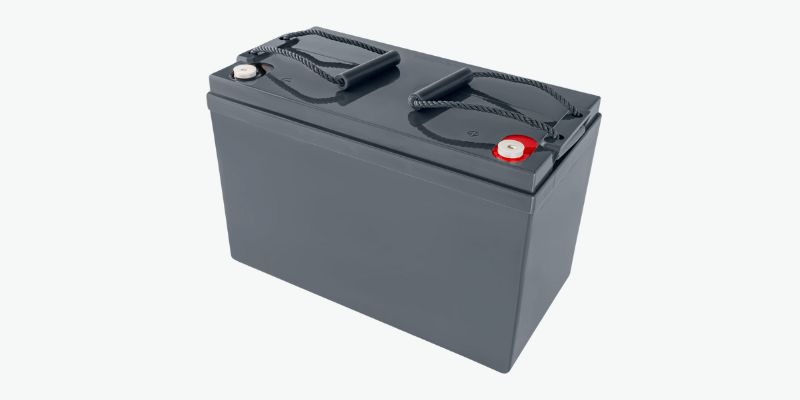Baterias de íon de lítio estão ao nosso redor, mantendo nossos gadgets e carros funcionando. Eles são como os pequenos motores que alimentam o nosso mundo. Mas o que há dentro deles e os faz funcionar? Vamos dar uma olhada.
O que é uma bateria de íon de lítio?
As baterias de íon-lítio são como pequenas fábricas de energia. Eles usam íons de lítio para gerar eletricidade.
Imagine esses íons como mensageiros transportando energia entre duas partes da bateria. No interior, um separador garante que os íons de lítio possam se mover entre os lados enquanto bloqueiam os elétrons.
Durante o carregamento, os íons viajam do lado positivo para o negativo, armazenando energia. Durante a descarga, os íons retornam para o lado positivo, fornecendo energia. Esse movimento de vaivém dos íons de lítio cria uma voltagem que empurra os elétrons através do dispositivo conectado, alimentando-o.
Bateria de íon de lítio vs. Célula de íon-lítio
Vamos falar sobre a diferença entre uma bateria de íons de lítio e uma célula de íons de lítio.
Uma bateria de íons de lítio é como uma equipe de corredores, onde cada célula de íons de lítio é um desses corredores. A equipe precisa que todos os corredores trabalhem juntos para serem fortes.
Cada uma dessas células tem sua própria voltagem. Por exemplo, a voltagem de uma célula de fosfato de ferro-lítio varia de 3,2 a 3,8 volts. Para alimentar dispositivos maiores, podemos combinar várias células para criar uma bateria de voltagem mais alta, como 12, 24 ou 48 volts. Alinhando células em série adiciona suas tensões.
As células também podem ser conectadas em paralelo. Isto combina a sua capacidade, de modo que duas células paralelas duram cerca de duas vezes mais que uma.

O que há dentro de uma bateria de íon de lítio?
Uma bateria de lítio contém múltiplas células de íons de lítio conectadas em série e em paralelo, juntamente com fios de conexão e um sistema de gerenciamento de bateria (BMS).
O BMS monitora a integridade e a temperatura da bateria. Além disso, pode equilibrar a energia em todas as células durante cada carga completa para maximizar a vida útil e o desempenho da bateria.
O que há dentro de uma célula de íon de lítio?
O interior de uma única célula de íon de lítio é bastante simples. É composto por quatro componentes principais: o ânodo, o cátodo, um eletrólito e um separador. Esses componentes funcionam juntos perfeitamente para armazenar e liberar energia conforme necessário.
Ânodo e Cátodo
No centro de uma célula de íon de lítio estão os dois eletrodos – o ânodo e o cátodo. Estes desempenham um papel crucial nas capacidades de armazenamento e liberação de energia da bateria.
O eletrodo negativo, conhecido como ânodo, normalmente é feito de grafite. Durante o processo de carregamento, os íons de lítio migram do cátodo, através do separador, e são armazenados no ânodo. Quando a bateria está em uso e descarregando, os íons de lítio retornam do ânodo para o cátodo.
Por outro lado, o eletrodo positivo, ou cátodo, geralmente é composto de óxidos metálicos à base de lítio. Os materiais catódicos comuns incluem óxido de lítio-cobalto (LCO), fosfato de ferro-lítio (LFP) e óxido de lítio-manganês (LMO). Cada um desses produtos químicos oferece suas próprias vantagens exclusivas em termos de densidade de energia, segurança e ciclo de vida.
Por exemplo, as células baseadas em LCO tendem a ter densidades de energia mais altas, o que as torna uma escolha popular para smartphones e laptops. As células LFP, por outro lado, são conhecidas pela sua segurança superior e longo ciclo de vida, o que as torna uma opção preferida para veículos elétricos. As células LMO atingem um equilíbrio entre densidade de energia e economia.
Eletrólito
O eletrólito facilita o fluxo de íons de lítio entre o ânodo e o cátodo durante a carga e descarga.
O eletrólito mais comum usado em uma célula de íon de lítio é um sal de lítio, normalmente hexafluorofosfato de lítio (LiPF6), dissolvido em um solvente orgânico. Este sal de lítio fornece o meio necessário para que os íons de lítio se movam livremente entre os dois eletrodos.
Durante o carregamento, os íons de lítio são extraídos do cátodo e migram através do eletrólito para serem armazenados no ânodo. Quando a bateria está em uso e descarregando, o processo é inverso, com os íons de lítio retornando do ânodo para o cátodo, gerando a corrente elétrica necessária.
Separador
O separador fica entre o ânodo e o cátodo. Este material fino permite a passagem de íons de lítio, mas interrompe a condução elétrica, forçando os elétrons a fluir através do dispositivo.
O separador também desempenha um papel de segurança – se superaquecer, seus poros se fecham, interrompendo o transporte de íons de lítio e desligando a célula da bateria para evitar danos ou incêndio.
Conclusão
Uma bateria de íon de lítio parece simples vista de fora, mas à medida que você se aprofunda, descobrirá muitos componentes diferentes.
Artigos relacionados:

